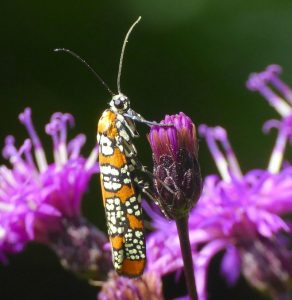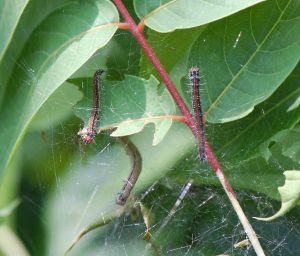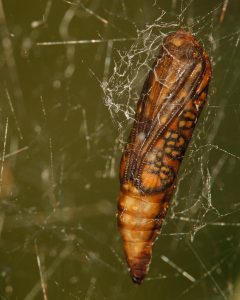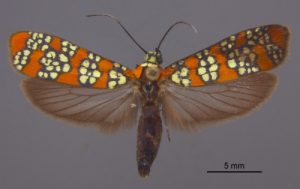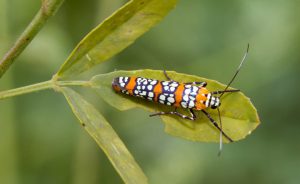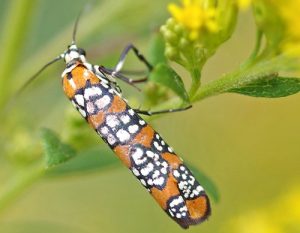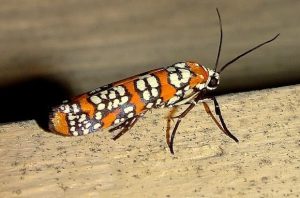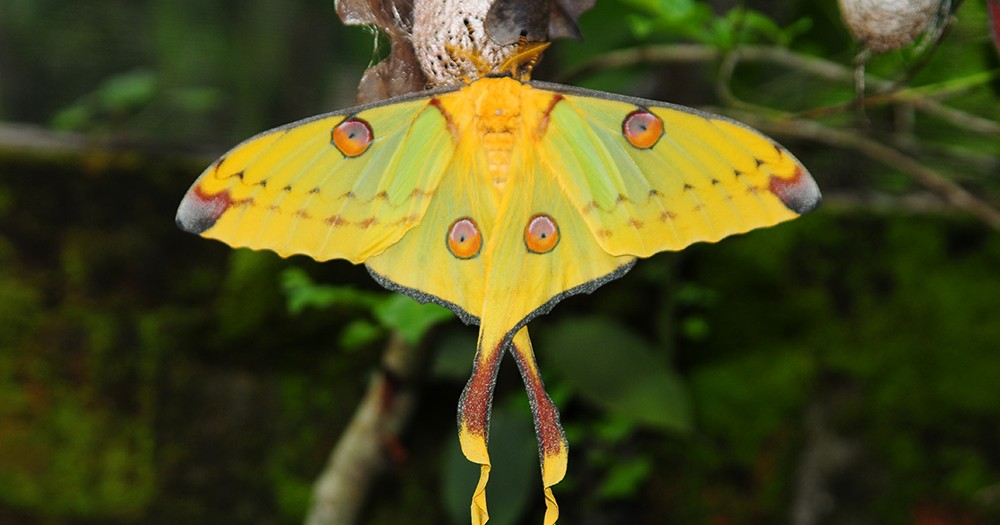Ailanthus Webworm Moth (Atteva aurea)
Ailanthus webworm, an ermine moth species, is found in different parts of the United States. It (mainly the caterpillar) primarily feeds on the Ailanthus or tree of heaven, which has earned the moth its name.
en.wikipedia.org
Scientific Classification
- Family: Attevidae
- Genus: Atteva
- Scientific Name: Atteva aurea
Description and Identification
Caterpillar
The larva has a light brown or dark black body with greenish-brown stripes across its back, alongside white and olive green bands arranged alternately to the sides. They also have thin, erect hairs that help them hang conveniently inside the web they build in their host plants’ leaves and branches. The ailanthus webworm caterpillars stay in the web throughout the day. Still, at night they leave their nests to feed on the ailanthus tree leaves alongside other plants.
Adult Moth
Sexual Dimorphism: Not prominent
Color and Appearance
Forewings: When opened, it appears orange, with white spots bordered in black. When closed, the bands and markings remain unchanged.
Hindwings: When opened, they are white with black veins running across. When closed, the hindwings are not clearly seen.
These moths overall have a bright and colorful appearance. Their head is black with tiny white spots, while their abdomen has brownish-black coloration. The antenna is filamentous protruding frontwards, instead of inclining toward their wingtips.
Average Wingspan: 1.27 – 3. 17 cm (0.5 – 1.25 inches)
Flight Pattern: Not recorded
Season: June – August
Eggs
The female lays eggs within the webs mostly during the evening that overwinter and finally hatch by late spring.
Quick Facts
| Distribution | Parts of the United States and eastern Canada |
| Habitat | Deciduous forests |
| Predators | Not recorded |
| Lifespan of Adults | Long lifespan (though the exact figures are not recorded) |
| Host Plants | Tree of heaven, paradise tree |
| Adult Diet | Nectar of flowers from their host plants |
Did You Know
- These colorful moths look like beetle or bug when not flying and a wasp in flight.
- The tree of heaven, one of their primary host plants, is a native of China, considered invasive in the United States because of its growth and reproduction pattern. Yet, nurseries do sell them as yard plants.
- Most bright-colored moth species have toxic substances present within them. However, the ailanthus webworm moth is considered nontoxic and does not harm humans when accidentally touched.
Scientific Classification
- Family: Attevidae
- Genus: Atteva
- Scientific Name: Atteva aurea

